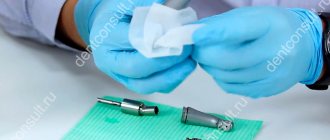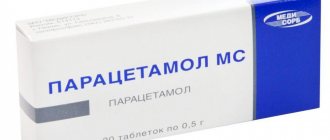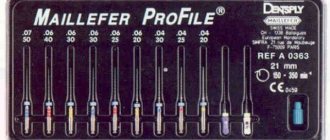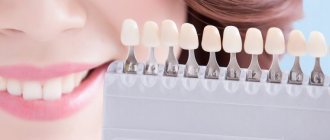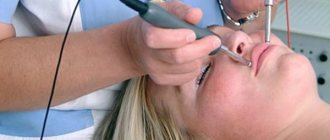How to properly lubricate dental handpieces
12/29/2014 15:12
Dental handpieces belong to the group of medical devices that must be sterilized after each patient.
The main stages and rules of processing are defined in Methodological Letter dated March 21, 1995 N 12/20-208 “Organization of sanitary-hygienic and disinfection-sterilization regimes in dental institutions” and MU-287-113 dated December 30, 1998. With the abolition of SanPiN 2.1.3.2630-10 these regulations regulate the procedure and requirements for disinfection and sterilization of dental handpieces. Modern medical dental handpieces are a technically complex device that requires careful handling and care. This manual describes basic care and maintenance procedures for dental turbine and power handpieces. Following these recommendations will allow you to save money and time on their repair. This manual is common to all manufacturers. For more detailed information, please refer to your equipment manufacturer's documentation.
Sterility for materials and instruments
Most dental supplies are disposable and supplied in individual sealed packages. These are masks, gloves, napkins, brushes and applicators for applying varnishes and gels, tablets on which pastes are mixed, elements of saliva ejectors, etc.
Reusable instruments and materials undergo special treatment after each patient. It is performed in several stages:
- disinfection - soaking in solution for 2 hours;
- mechanical cleaning;
- washing (ultrasound can be used to remove all contaminants);
- washing in distilled water;
- drying;
- packaging in disposable sealed bags;
- dry heat or steam treatment (at high temperature).
After the sterilizer, the instrument remains in individual packaging, which is opened only before use in the presence of the patient.
Sanitary standards allow the use of conventional autoclaves in dental offices. In such equipment, superheated steam is supplied under pressure to sterilize accessories. The method is effective, but it does not always completely clean the pores on the surface of the instruments (if any). To increase the reliability of processing, dry heat sterilization is used, the temperature at which is so high that all microorganisms die. Another option is the use of automated autoclaves, with control of the operating protocol. To check the quality of cleaning, chemical indicators are additionally used - azopyram samples. If traces of biological material remain on surfaces, they show this. The results of such checks are recorded in a separate journal.
After sterilization and until use, reusable instruments are stored in special boxes with bactericidal irradiators. However, they are not removed from sealed bags.
Treatment of dental handpieces according to SanPin
Step 1: Rinse and blow out the tip
First, the dentist performs the necessary manipulation on the patient, and immediately upon completion, he rinses and blows out the tip. It is strictly prohibited to disconnect the tip from the installation before washing and purging. This process is described in more detail in the technical data sheet, which regulates the correct operation of the installation. The product is washed using ordinary water; mandrels or other specialized devices are used for cleaning, and purging is performed using an air jet.
Step 2: Clean the outside of the tip
This step can be started only after the tip is disconnected from the installation. Its surface must be carefully wiped with a textile cloth soaked in drinking water. The product should be wiped until all visible dirt has completely disappeared from it.
It is better to choose a disinfectant composition not arbitrarily, but taking into account the recommendations coming from the company that manufactures the tips. Medical products used by dentists should be disinfected with drugs that have specific properties. These properties include their fungicidal, virucidal and bactericidal characteristics, as well as pronounced antimicrobial activity. When choosing modes, you have to decide: either Candida fungi or viruses. In medical institutions where they work with patients diagnosed with tuberculosis, it is necessary to use a regime in which the disinfectant liquid will be active against mycobacterium tuberculosis.
Liquids containing aldehydes are best avoided. The fact is that liquids with such an ingredient do not have the ability to fix organic contaminants on the surfaces of dental devices. Disinfection compositions must have excellent cleaning and washing properties, and their exposure time must be short.
Based on the practical experience of dentists, it is better to purchase drugs that will be ready for immediate use immediately after delivery to the clinic. These include, in particular, “Trilox-spray” (available for sale at an estimated cost of 452 rubles), “Diaspray” (approximately 517 rubles), “Brilliant Purity” (about 389 rubles), “Incidin Liquid” (approximately 926 rubles), “Avansept-spray” (about 212 rubles), “Bonsolar” (about 401 rubles), “Policlin-spray” and a number of other names with similar functions. Hereinafter, the cost of drugs is based on retail sales without taking into account discounts and special offers.
After describing the last step of processing the tips, a formula will be given by which the dentist will be able to most accurately calculate his need for disinfectant liquid, in accordance with the intensity of his workload and the nuances of the work process.
Step 3. Disassemble the tip
All working tools must be removed from the product (we are talking about a polisher, a milling cutter, a disk, a bur, and so on). The handpiece must be sent for sterilization strictly in disassembled condition. There are models of tips on which a removable head is installed. In this case, the head and main part should be disconnected from each other.
Step 4: Lubricate the tip
The service life of the tip directly depends on the quality of the lubricant. The more thoroughly you lubricate the product, the longer it will last. To ensure that the lubricant reaches the internal cavities of the part, a specialized spray operating under pressure is used in the process.
Step 5: Pack the tip
It is strongly recommended that dental handpieces be sterilized in their packaged state. This helps minimize the risk of re-contamination. To package products at this stage of processing, specialized sterilization disposable materials are used. A worthy example of such material is the “DGM Steriguard” combination bags. A set of 100 bags can be purchased at an estimated cost of 181 rubles 13 kopecks.
Step 6. Sterilize the tip
Sterilization of both dental handpieces and the attachments supplied with them can only be carried out using steam. Specific parameters of the sterilization regime depend on the recommendations of the handpiece manufacturer. According to established practice, sterilization is usually carried out at a temperature of 135°C.
The sterilization process is subject to strict control at each cycle. To do this, specialists use chemical test indicators, which are placed at certain control points. Thanks to modern test indicators, a specialist can simultaneously evaluate at least two or several critical sterilization parameters. The result of this assessment should be a conclusion regarding the suitability of the sterilized batch of products for reuse. These conclusions are usually recorded in the sterilizer operation control logs.
The estimated cost of a package containing 500 chemical test indicators is 341 rubles 61 kopecks. The cost of one logbook for monitoring the operation of sterilizers is approximately 83 rubles.
Upon completion of sterilization, the tips should be stored in their packaged state, inside the workbench or in a cabinet. The maximum permissible storage duration depends on the specific types of packaging materials, as well as on the provisions of the instructions governing the use of the product.
Processing dental handpieces takes a lot of time and effort. For this reason, dental offices should always have sufficient supplies of necessary medical equipment and products. Each dental work station should be equipped with at least six handpieces. Two of these six products should be angular, two should be straight, and two more should be turbine.
If the processing of dental handpieces is organized thoughtfully and carried out rationally, the service life of the products will increase significantly. This will also help minimize the risk of patients contracting infections transmitted to them during contact with insufficiently clean equipment. An attempt to save a little on equipment and disinfection compounds can result in enormous risks for the reputation of an individual doctor and the entire medical institution.
Step 7. Devices for sterilizing tips
On our website you can find a large number of devices for processing dental handpieces. Some of the best devices for sterilizing turbine handpieces are melag autoclaves. Stomboard is more than a hundred advertisements for handpiece sterilization devices
Treatment of dental offices
Cleaning regulations are determined by sanitary standards. All surfaces must be smooth, easy to clean, without microscopic pores or roughness. They are treated with disinfectants several times a day. Disinfection is carried out for furniture and equipment of walls, floors, ceilings, window sills, etc.
Dental offices must be equipped with special medical furniture. It is made from materials with surfaces that can withstand repeated disinfection and are free of micropores.
After each appointment, additional processing of all items touched by the doctor or patient is performed.
Some infections are transmitted by airborne droplets. To protect against them, dentistry can use bactericidal recirculating lamps (they continuously disinfect the air; they can operate in the presence of the patient), closed-cycle UV emitters, and special filters. A separate ventilation system is installed for surgical rooms. The air passes through fine filters. Access to the room must be through the sterilization department.
Step 1: Disinfection of rotary dental instruments
Purpose: to destroy pathogenic and opportunistic microorganisms that contaminated products during medical procedures.
Disinfection of rotary dental instruments should be carried out immediately after their use, without allowing contaminants to dry on them, by completely immersing them in a disinfectant solution. The thickness of the mortar layer above the products should be at least 1 cm.
Working solutions for disinfecting instruments are prepared in advance. To do this, the required amount of concentrated disinfectant is mixed with water in the proportions specified in the instructions for use of the disinfectant.
For your information
To accurately dose the concentrate, you can use a graduated measuring cup or a disposable injection syringe.
All containers with working solutions of disinfectants must be equipped with tight-fitting lids, have clear inscriptions or labels indicating the product used, its concentration, purpose, preparation date, and expiration date of the solution.
To process dental instruments, special small-volume containers are used, which can significantly reduce the consumption of disinfectants.
Note!
To disinfect medical devices used in dentistry, it is necessary to use disinfectants that have a wide range of antimicrobial activity, including bactericidal, virucidal, and fungicidal properties.
The choice of modes is carried out between viruses or fungi of the genus Candida.
In tuberculosis medical organizations, regimens should be used in which disinfectant solutions are active against mycobacterium tuberculosis.
It is not recommended to use preparations containing aldehydes, since they are capable of fixing organic contaminants on the surface of instruments.
When processing steel and carbide burs, you should avoid using products containing hydrochloric acid and hydrogen peroxide - they can significantly deteriorate the properties of the tools.
Prolonged exposure of carbide and steel burs in the same container with a disinfectant solution can lead to their surface corrosion.
Dental equipment
Water supply systems. They are used to cool the tooth tissue during preparation. The jet is supplied through the tip. This treatment can only be carried out with distilled water. The design of the units is such that liquid from the oral cavity cannot enter the line even with a constant change in pressure.
Tips. During treatment, they come into contact with tooth tissue and require especially thorough cleaning. It becomes more complicated because the tips may have hidden cavities in which bacteria accumulate. For high-quality cleaning, the tip is blown twice: to remove mechanical impurities and rinse it with a hot antiseptic solution. Only after this is it sterilized in a disposable sealed bag.
Other tools. Endodontic accessories, burs, and scaler tips are stored in closed containers after treatment. You can only remove them from there with disposable sterile tweezers.
Individual dental kits. They include masks, gloves, aprons, and caps for the doctor and assistant. Special bags are used for waste materials. The standard set includes tips for a vacuum cleaner and a saliva ejector. If anesthesia is performed, the carpule and needle are disposable.
The described sterilization and disinfection protocol is used at the DentoSpas clinic and complies with the AntiAIDS and AntiHepatitis program. It ensures the safety of the patient during a dental appointment and eliminates infection and infection.



